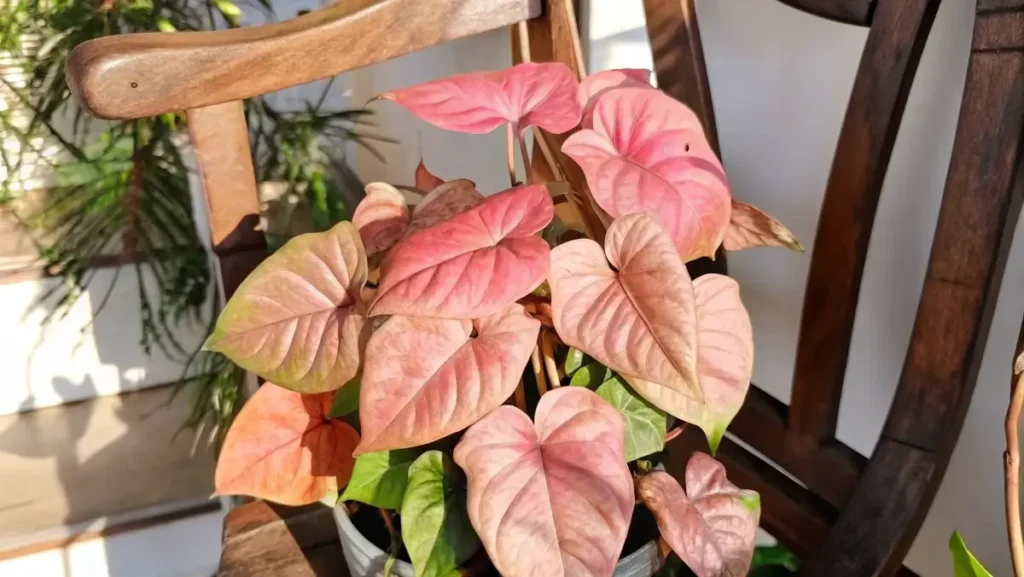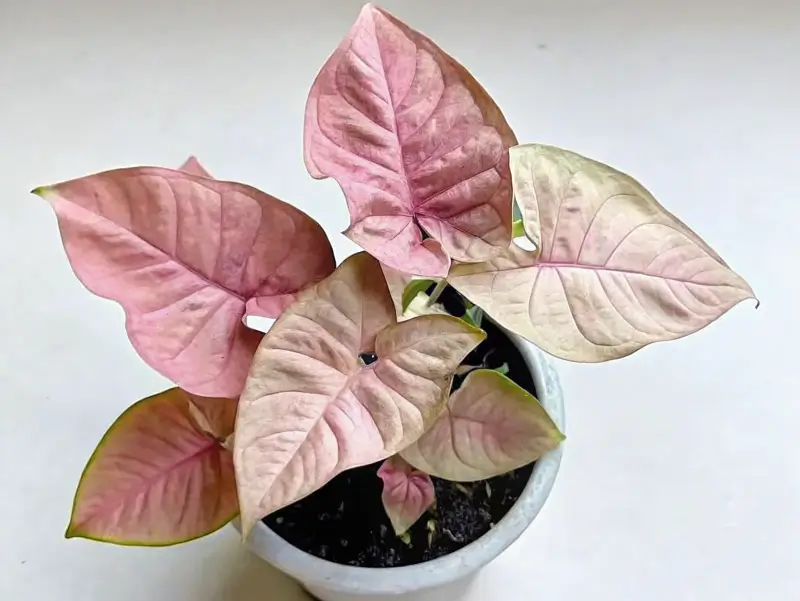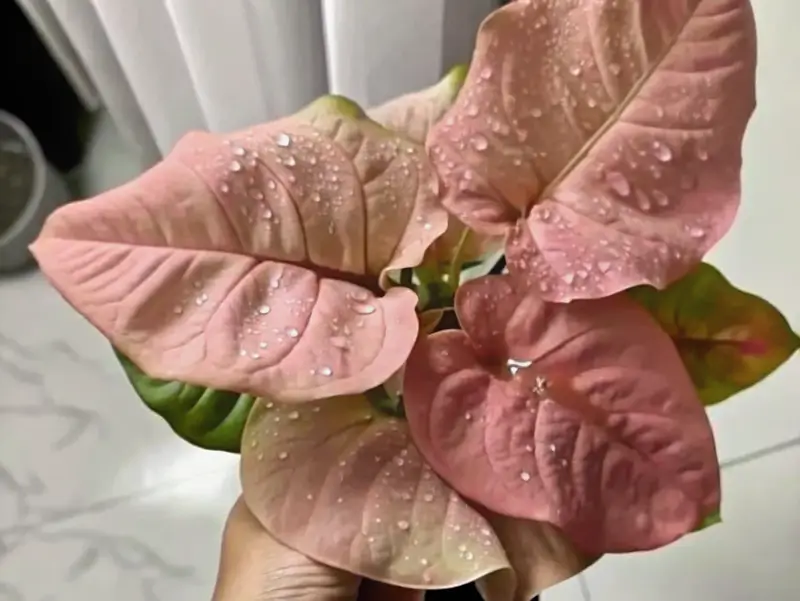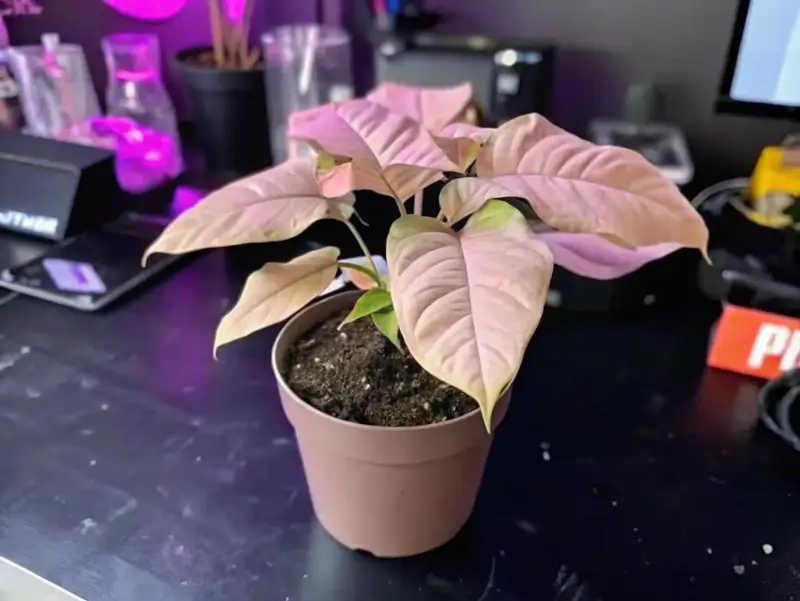
Fellow plant folks! I’m so excited you’re here. In this article, I’ll talk about the fascinating world of the pinky plant, along with tips on choosing different varieties and keeping them happy. We’ll also chat about pinky winky hydrangea care, tidbits on the pinky rose plant, and some personal stories about pink-loving greenery. I first fell in love with a vibrant pink bloom in early spring—it honestly lit up my entire yard. Whether it’s sunny days or frosty nights, there’s always a way to keep your pink plants looking fantastic.
Table of Contents
Introduction to the Pinky Plant
What Is a Pinky Plant?
If you’ve ever walked through a garden and spotted bright pink blooms or leaves, there’s a good chance you were looking at a pinky plant. This term covers all sorts of pink-tinged plants, from the pinky winky hydrangea to the beloved pinky rose plant.
- Some people apply pinky plant broadly to any species boasting pink leaves, stems, or flowers.
- You’ll find them indoors, outdoors, or even swinging from hanging baskets.
- Pink stays a popular color choice, so these plants carry a hip, vibrant appeal.
Origins and Historical Significance
I’m personally drawn to how pink plants made their way through garden history:
- Many pink species trace back to tropical regions in Asia and South America.
- Others, such as the pinky winky tree hydrangea, have North American origins.
- Pink blooms have been used in romantic ceremonies, cultural festivals, and everyday décor for ages.
People in the 19th century apparently prized pink flowers for cottage gardens, and the trend has only gained momentum in modern times.
Top Varieties of Pinky Plants
The “Pinky Winky” Hydrangea
You’ve probably encountered the pinky winky hydrangea. I love how its creamy white blooms shift to pinkish-red as the season advances. Even cooler, it forms a cone shaped hydrangea cluster, reminding me of a soft-serve sundae in the middle of my garden.
- Quite easy to maintain with decent soil and consistent moisture.
- Striking visual impact, even from a distance.
- Fills up a corner of the yard with minimal fuss.
Pinky Rose Plant
A more classic route is the pinky rose plant, which offers that timeless flower appeal. I remember carefully pruning mine one chilly March day, only to see it burst with color a few weeks later.
- Prospers in fast-draining soil and bright to partial sun.
- Needs rounding out during pruning season for best shape.
- Mulch around the roots to protect it from rough winters.
If you’ve ever given pink roses as a gift, you know how they can light up someone’s face. That same vibe applies when they’re thriving in your yard.
Ideal Growing Conditions and Soil Requirements for Pinky Plants

Understanding Optimal Soil Mixtures
Healthy pinky plants often require soil that empties water efficiently. Standing water can trigger issues like root rot, which is a headache to deal with. Luckily, a few easy tricks can help:
- Shoot for slightly acidic conditions (pH 5.5–6.5).
- Add peat moss, pine bark, or compost to enrich and aerate.
- Avoid waterlogged areas or heavy clay soil if possible.
I’ve found that mixing organic matter into my potting blend keeps my pinky winky tree hydrangea looking lively. The extra nutrients help the plant push out fresh leaves and blooms.
Light, Temperature, and Humidity Needs
Lighting, temperature, and humidity can make or break your pink display:
- Most pink varieties flourish with bright, indirect light.
- The cone shaped hydrangea type may handle more direct sun if kept watered.
- Ideal indoor temps hover around 65–80°F, though they can handle small fluctuations.
- Some pink indoor plants appreciate higher humidity—think about a small room humidifier if you live in a dry region.
Wintertime can be harsh, so keep an eye on your plant’s leaves. Too-cold drafts might cause leaf drop or color loss.
Watering and Fertilizing Pinky Plants
Establishing a Proper Watering Schedule
The hydrangea tree pinky winky typically needs routine watering:
- Give a deep soak whenever the top inch of soil feels dry.
- Prevent water from accumulating in saucers or trays.
- Adjust frequency based on heat levels—hotter days often mean more watering.
I once neglected a pinky rose plant because I was traveling—when I got back, the leaves had wilted. A quick, generous watering and a bit of sunlight helped it spring back to life.
Best Fertilizers for Healthy Pink Foliage
Nutrient-rich soil is key to keeping pink hues vibrant:
- Go with a balanced, slow-release fertilizer, like a 10-10-10 or 14-14-14 mix.
- Supportively sprinkle sulfur if you need an acidity boost.
- Follow instructions to avoid fertilizer burn around the roots.
I usually prefer organic options because they’re mild, but synthetic versions can work if you measure precisely.
Pruning and Propagation Techniques

Methods of Propagation (Cuttings, Division, and More)
Growing more pinky plants for friends or family is easier than you’d expect:
- Stem cuttings: Great for many philodendrons or hydrangeas. Simply pop them in water or a soil mix, and wait for roots.
- Division: Separate multi-stemmed clumps to pot them up individually.
- Air layering: Wrap a stem with moist sphagnum moss and plastic until roots form.
Handing over a baby pinky winky hydrangea cutting to a neighbor can strengthen friendships and spread pink cheer.
Pruning to Maintain Shape and Encourage Growth
Let’s face it: pruning can feel intimidating, but it pays off:
- For cone shaped hydrangea shrubs, prune in late winter or early spring before new growth emerges.
- Snip away any dead or damaged canes.
- Cut just above a node to prompt healthy branching.
My personal routine includes a weekly yard walk with pruning shears in hand, so I stay on top of any straggly stems or suckers.
Common Pests and Diseases Affecting Pinky Plants
Identifying Infestations (Spider Mites, Aphids, Mealybugs)
Even a well-loved pinky rose plant can attract sneaky bugs:
- Aphids: Usually found in clusters on new shoots, leaving behind a sticky residue.
- Spider mites: Look for tiny webs on leaves and subtle speckling.
- Mealybugs: Notice white, cottony lumps on stems or leaf joints.
A novice gardener might overlook these at first, but if your plant’s leaves look dull or curled, it’s time to peek closer.
Effective Disease Control and Prevention
Dealing with pests requires consistent action:
- Insecticidal soap can knock back small populations.
- Neem oil is a favorite natural remedy.
- Ladybugs and lacewings can help keep aphid numbers in check.
If you see white, powdery mildew, consider boosting airflow by spacing plants and avoiding overhead watering. You can find additional pesticide recommendations or organic tips at https://www.usda.gov.
Decorative Uses and Landscape Ideas with Pinky Plants
Indoor Décor Solutions Using Pink Varieties
Brighten your home or office with a Pink Syngonium or mini pinky rose plant:
- Put them near windows, avoiding overly harsh sun if the leaves start to scorch.
- Combine different pink plants of varying shapes for a pleasing indoor cluster.
- Snip a pinky winky hydrangea bloom and pop it in a vase for a dinner table centerpiece.
I love mixing pastel pots or minimalist planters to make the pink stand out. Sometimes, a subtle contrast draws eyes right to the leaves or petals.
Outdoor Garden Placement and Companion Planting
Creating a dreamy pink garden is such a blast. Whether you’re working with a sprawling yard or a small patio:
- A stately pinky winky tree hydrangea can anchor a flower bed.
- Mix pinks with silver-foliage plants for a soft, romantic look.
- Stagger plants by height to create layers of color and texture.
If you’re looking for a non-pink accent piece, consider the Japanese Blueberry Tree. It provides an interesting contrast without overshadowing your pink show-stoppers.
Frequently Asked Questions About the Pinky Plant

Is Pinky Winky a Bush or Tree?
Here’s the thing: the pinky winky hydrangea typically grows as a multi-stemmed shrub, but:
- Gardeners often prune it into a tree form by removing lower branches.
- It can reach a respectable height, looking like a small ornamental tree.
- In most nurseries, they’ll label it as a shrub, but you can shape it however you like.
In my yard, I’ve coached mine into more of a tree style—really gets people talking when they walk by.
Why Is the Pink Princess Plant So Expensive?
If you’re into philodendrons, you might have noticed the Pink Princess commanding a high price:
- It’s rare to find consistent pink variegation.
- Social media hype spiked demand.
- Growers discard many lightly variegated cuttings, so production can be limited.
I spent months hunting for an affordable Pink Princess. When I finally nabbed one, I felt like I’d found buried treasure!
Is Pink Syngonium an Indoor Plant?
Yes! Pink Syngonium is practically iconic among indoor gardeners:
- Prefers moderate, indirect light.
- Enjoys a bit of humidity—especially in winter.
- Maintain the earth mildly damp yet never saturated.
If leaves lose their pink tone, shift it to a spot with more consistent light or add a mild fertilizer.
How Do You Take Care of a Pinky Winky Plant?
We can’t forget the beloved pinky winky hydrangea:
- Water regularly, letting the topsoil dry just a bit in between.
- Place in partial sun to partial shade, depending on your climate.
- Prune in early spring, trimming back old wood.
- Use a balanced plant food to spark robust blooms.
Following these points keeps your pinky winky plant lush and showy.
Sustainable Gardening and Environmental Impact
Eco-Friendly Care Options for Pinky Plants
Conserving resources and protecting the environment can feel rewarding:
- Swap chemical pesticides for natural solutions like neem or insecticidal soaps.
- Use compost to feed the soil with nutrients while cutting down on waste.
- Water efficiently by aiming at the base of plants and mulching to retain moisture.
I started adding homemade compost to my pinky rose plant bed. Not only did it shrink my trash output, but I noticed stronger stems and more vivid blooms.
The Long-Term Impact of Pink-Hued Species
Planting a pinky winky tree hydrangea or other pink show-stopper offers:
- Potential pollinator draws—bees and butterflies love hydrangea blossoms.
- Visual interest that shifts as blooms mature.
- A chance to brighten up the neighborhood with a splash of color.
Sometimes, blending darker blooms for contrast (like the Black Dahlia Flower) helps the pink ones pop even more.
Conclusion and Future Trends for Pinky Plants
Emerging Pink Varieties to Watch
Each year, breeders add more pink wonders to the market:
- New lines of cone shaped hydrangea with deeper pink or interesting petal structures.
- Variegated Pink Syngonium watered-down crosses with unique leaf patterns.
- Rare Pink Philodendron hybrids that spark envy among plant collectors.
Social media amplifies the craze, so pink lovers unite to share tips, show off blooms, and trade cuttings. There’s nothing like stumbling upon a bright pink leaf in your feed to inspire a new gardening project.
Predicting Future Horticultural Innovations
Among my plant-loving friends, the speculation is nonstop:
- Continued breeding for stronger, more adaptable pink cultivars.
- Potential to find pink plants that thrive in cooler climates.
- Greater accessibility in local nurseries, helping newcomers join the pink plant party.
With just a phone and a watering can, anyone can share or discover new pink treasures instantly. That sense of community is one of my favorite parts of gardening.
Final Reflection: The Joy of Growing Pinky Plants
I’ve spent uncountable hours nurturing pink plants, talking about them with friends, and even swapping cuttings with neighbors—yes, it’s become a little obsession of mine. But honestly, a big draw is how these plants lift the mood. When I see pink blooms nodding in sunlight, it reminds me of cotton candy at summer fairs or sunrises with pastel clouds.Some quick tips I’ve gleaned over time to help you get started:
- Keep it simple: Don’t bombard yourself with too many new plants at once.
- Observe carefully: Watch how your pinky winky hydrangea adjusts to sun or shade, how often it drinks water, and how quickly it bounces back from pruning.
- Experiment comfortably: Gardening is an evolving process. If something fails, try a new spot or a different approach.
Once you discover the right balance of sunlight, water, and sweet talk (I sometimes chat with my pinkies out loud!), these pops of pink can cheer up any corner. Whether it’s a pinky rose plant by the front gate or a hydrangea tree pinky winky as a centerpiece, there’s a pink variety out there just waiting to be part of your personal paradise.Thanks for hanging out with me on this pink-flowered journey.
I hope you feel inspired to bring a dash of rosy magic into your own garden—indoors or outdoors. Feel free to share your progress with fellow garden enthusiasts, because this hobby is all about learning, giving, and celebrating the small yet mighty wonders of nature.Happy planting!

1 thought on “Pinky Plant: Expert Growing and Caring Guide”
Comments are closed.